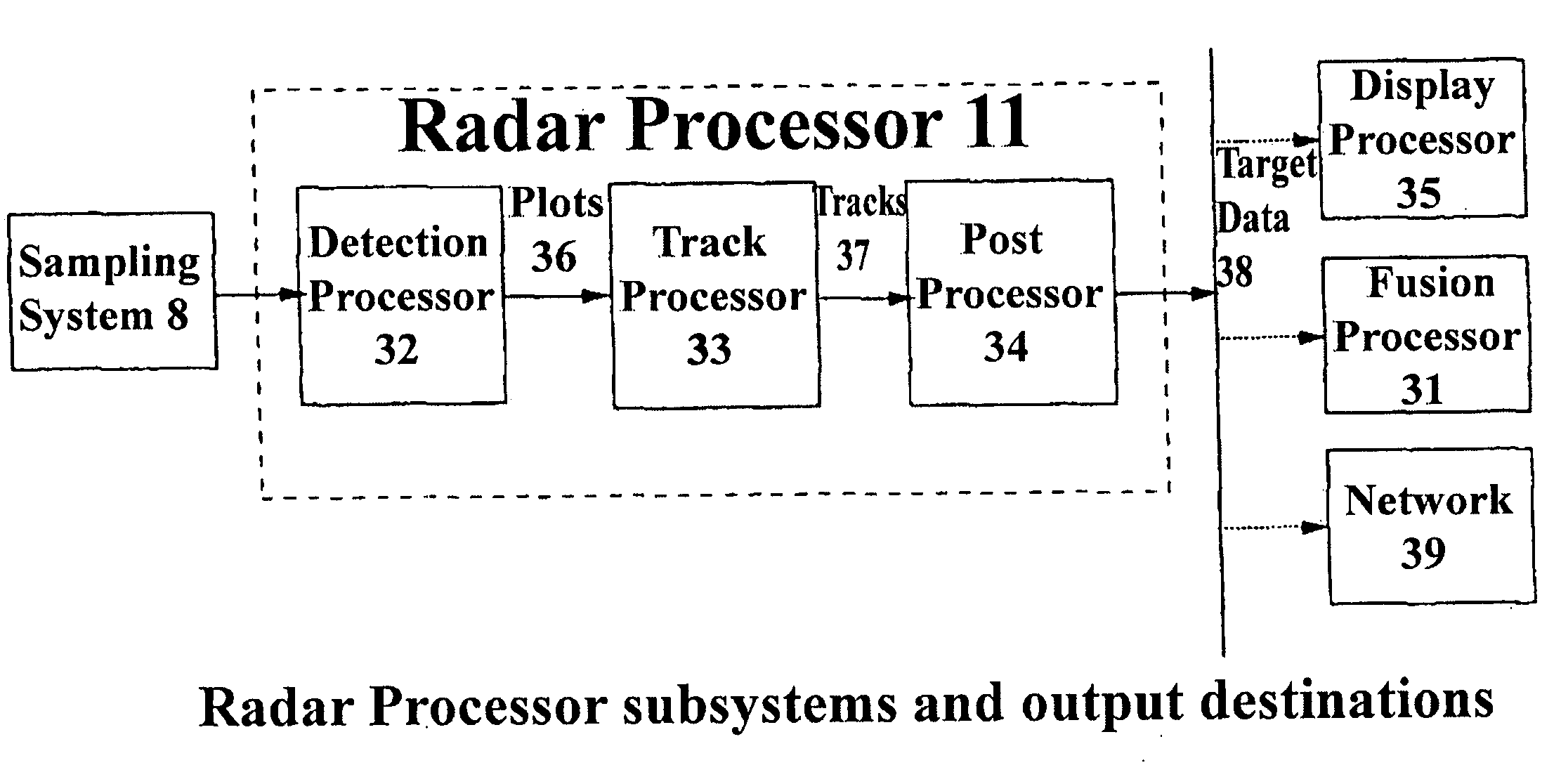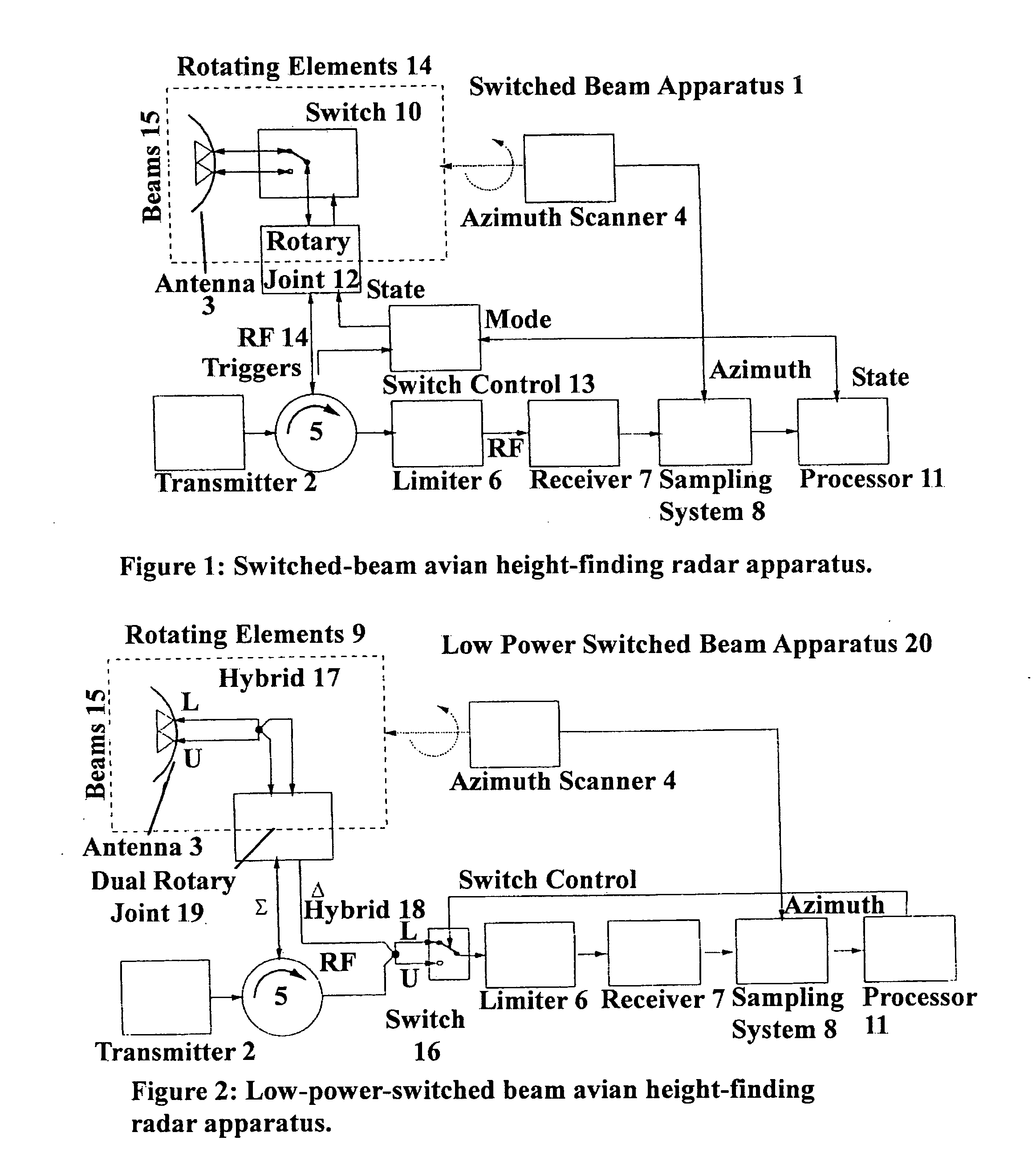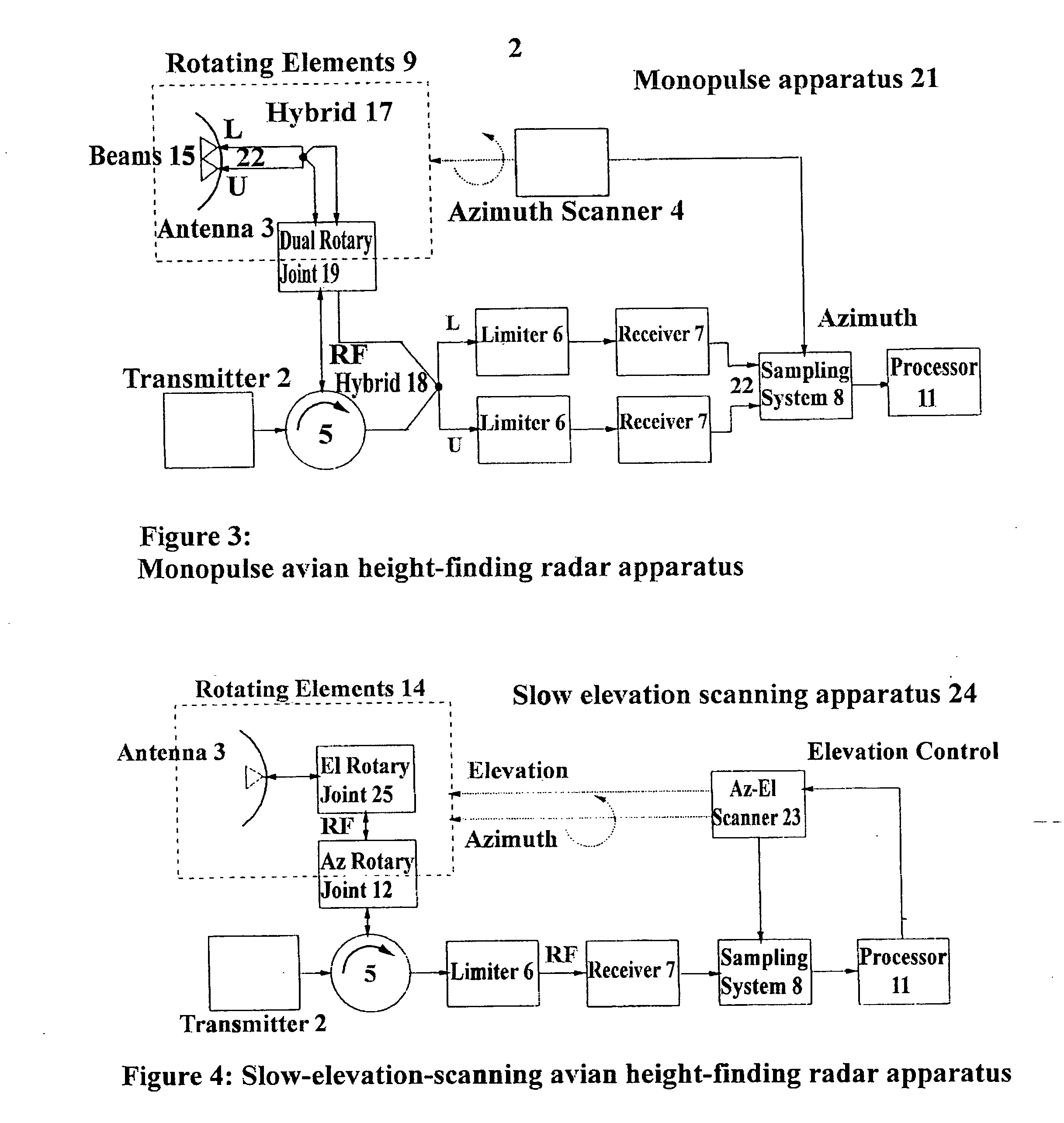Device and method for 3D height-finding avian radar
a technology of avian radar and height-finding device, which is applied in the direction of measurement device, radio wave reradiation/reflection, and using reradiation, etc., can solve the problems of not accurately estimating the height (within the beam extent) of the system, and the significant hazard of birds to aviation safety
- Summary
- Abstract
- Description
- Claims
- Application Information
AI Technical Summary
Benefits of technology
Problems solved by technology
Method used
Image
Examples
Embodiment Construction
[0059]A block diagram of a switched-beam avian height-finding radar apparatus 1 in accordance with the present invention is shown in FIG. 1. Characteristics of each block are as follows. The avian height-finding radar apparatus 1 includes a radar transmitter 2 that is typically noncoherent and transmits pulses of constant width at a constant pulse repetition frequency (PRF) at X-band or S-Band (or other bands). Radar apparatus 1 typically has either a continuously rotating or sector-scanning antenna 3. Antenna 3 is typically mounted near ground level within (or near) the area to be monitored.
[0060]The azimuth scanner 4 rotates the antenna 3 continuously in azimuth while the antenna 3 is transmitting and receiving. The circulator 5, limiter 6 and receiver 7 are conventional radar components such as those found in marine radar transceivers. The sampling system, 8 digitizes the radar return video signal.
[0061]The switched-beam antenna 3 has (at least) 2 selectable radar beams 15 pointe...
PUM
 Login to View More
Login to View More Abstract
Description
Claims
Application Information
 Login to View More
Login to View More - R&D
- Intellectual Property
- Life Sciences
- Materials
- Tech Scout
- Unparalleled Data Quality
- Higher Quality Content
- 60% Fewer Hallucinations
Browse by: Latest US Patents, China's latest patents, Technical Efficacy Thesaurus, Application Domain, Technology Topic, Popular Technical Reports.
© 2025 PatSnap. All rights reserved.Legal|Privacy policy|Modern Slavery Act Transparency Statement|Sitemap|About US| Contact US: help@patsnap.com



